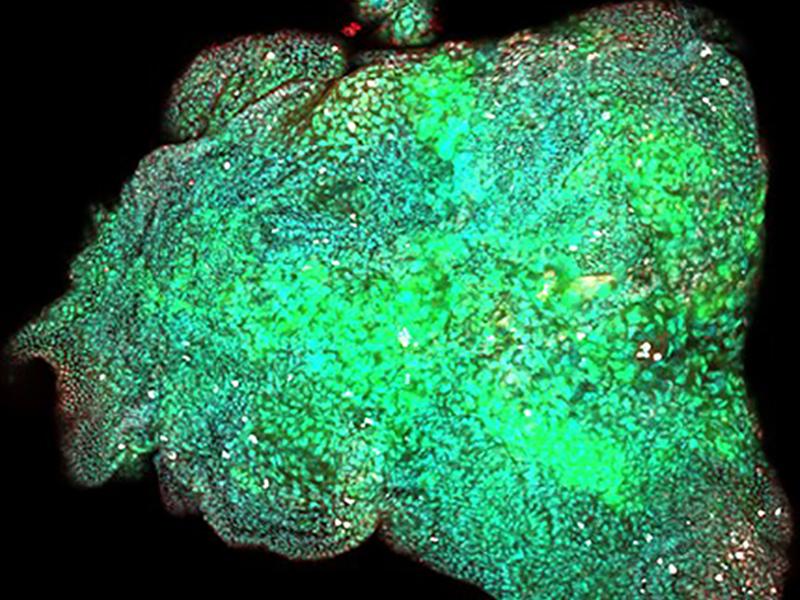Fruit flies help shed light on tumor formation, migration and growth
What can the common fruit fly teach us about cancer?
"Over the last few decades, the fruit fly - Drosophila melanogaster - has become a successful model for studying human cancers," said Wu-Min Deng, PhD, professor of biochemistry and molecular biology and the Gerald and Flora Jo Mansfield Piltz Professor of Cancer Research.
In fact, Deng says many cancer-related genes in humans are named after genes in flies, where they were first identified, and the model is helping to shed light on how tumors form, how they migrate and how they behave.
"It's not a well-known model for cancer studies, because they don’t look like humans," said Deng. "There are even oncologists who don't realize we are using a fly model for basic cancer research, but the genetic simplicity and vast arsenal of genetic tools available in Drosophila provide a unique opportunity to address questions regarding cancer initiation and progression that would be extremely challenging in other model systems."
The simplicity of the Drosophila model is just one of its advantages, according to Deng. While its genetic makeup is much simpler than other organisms, many of the genes and pathways involved in human disease, particularly cancer, play similar roles in the fly, making it an excellent option for biologic discovery. Their systems are easier to manipulate, allowing researchers to generate mutations and target overexpression more easily. And because their life cycle is very short and they reproduce quickly, Deng's team can induce tumors to grow within a couple of days and manipulate fly larvae to carry the same tumor as the parent.
The Deng Lab's recent work involving isolating Drosophila ovaries for genetic sequencing of the various cells involved in oogenesis was recently featured on the home page of the online journal PLOS Biology.
"We use a few different fruit fly tissues to model growth regulation and tumor formation," said Deng. "Ovary is one. Ovaries produce functional eggs for the next generation. The process is very elaborate and involves interaction between several different cell types within the organ. But the process is also regulated by other systems, so this collaboration can be analyzed.”
“We study what kind of cell types are there, the different genes expressed and what kinds of signaling might be involved. We feel this project will be a good resource to the field. Anyone who wants to use this model to do any type of developmental or cancer studies can refer to our paper."
Deng moved his lab to Tulane from Florida State University a little less than a year ago. Since his arrival, he has begun to explore opportunities to interact and hopefully collaborate with fellow Tulane researchers using other model systems.
His team is currently working on a new manuscript looking at how cell growth is regulated normally and how disruption can lead to tumor formation in the Drosophila model.
"I am very fortunate to have a group of people in my lab who have worked tirelessly to make this project possible," said Deng.

